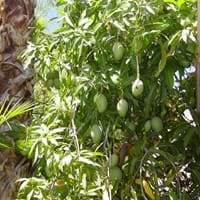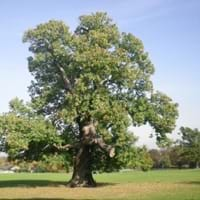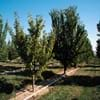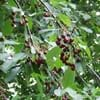Life Span
Perennial
Perennial
Origin
Hybrid origin, India, Melanesia
Eastern Asia
Types
Alphonso, Florigon, Jakarta
Not Available
Number of Varieties
Not Available
Habitat
Subtropical climates, Tropical areas
Temperate Regions
USDA Hardiness Zone
10-15
6-8
AHS Heat Zone
Not Available
8-2
Sunset Zone
H1, H2, 23, 24
A3, 2a, 2b, 3a, 3b, 4, 5, 6, 7, 8, 9, 10, 12, 14, 15, 16, 17, 18, 19, 20, 21, 22, 23, 24
Habit
Oval or Rounded
Oval or Rounded
Flower Color
Yellow, Red
Red, Purple
Flower Color Modifier
Bicolor
Bicolor
Fruit Color
Yellow, Gold
Red, Green
Leaf Color in Spring
Dark Green, Bronze
Green, Light Green
Leaf Color in Summer
Dark Green, Bronze
Green
Leaf Color in Fall
Dark Green, Bronze
Yellow, Gold
Leaf Color in Winter
Light Green
Not Available
Leaf Shape
Acuminate
Oblong or Lanceolate
Plant Season
Spring, Summer, Fall, Winter
Spring, Summer, Fall, Winter
Sunlight
Full Sun
Full Sun, Partial Sun, Partial shade
Type of Soil
Loam, Sand
Clay, Loam, Sand
The pH of Soil
Acidic, Neutral, Alkaline
Acidic, Neutral, Alkaline
Soil Drainage
Well drained
Well drained
Bloom Time
Early Spring, Winter, Late Winter
Spring
Tolerances
Drought
Shade areas
Where to Plant?
Ground
Ground
How to Plant?
Grafting, Seedlings, Stem Cutting, Transplanting
Grafting, Seedlings
Plant Maintenance
Medium
Medium
Watering Requirements
Over-head watering
Average Water Needs
In Summer
Lots of watering
Lots of watering
In Spring
Moderate
Moderate
In Winter
Average Water
Average Water
Soil pH
Acidic, Neutral, Alkaline
Acidic, Neutral, Alkaline
Soil Type
Loam, Sand
Clay, Loam, Sand
Soil Drainage Capacity
Well drained
Well drained
Sun Exposure
Full Sun
Full Sun, Partial Sun, Partial shade
Pruning
Remove damaged leaves, Remove dead branches, Remove dead leaves
Remove damaged leaves, Remove dead branches, Remove dead leaves
Fertilizers
All-Purpose Liquid Fertilizer
All-Purpose Liquid Fertilizer
Pests and Diseases
Red blotch
Fungal Diseases, Squirrels
Plant Tolerance
Drought
Drought
Flowers
Insignificant
Insignificant
Flower Petal Number
Single
Single
Foliage Texture
Medium
Fine
Foliage Sheen
Glossy
Matte
Attracts
Birds
Not Available, Squirrels
Allergy
bullous cheilitis, contact allergic dermatitis
Oral Allergy, Throat itching
Aesthetic Uses
Showy Purposes
Beautification, Landscape Designing
Beauty Benefits
Acne, Promotes Healthy Hair, Removes dandruff
Not Available
Environmental Uses
Air purification, Food for animals, Food for birds, Shadow Tree
Air purification
Medicinal Uses
Digestion problems, Eye Problems, Nutritive
Potassium, Rich in Iron, Vitamin A, Vitamin B, Vitamin C
Part of Plant Used
Whole plant
Seeds
Other Uses
Added to salads, Culinary use, Food for animals, Grown for shade
Food for animals, Used as a nutritious food item, Used As Food, Used for its medicinal properties, Used for Landscaping
Used As Indoor Plant
Insignificant
No
Used As Outdoor Plant
Yes
Yes
Garden Design
Container, Edible, Feature Plant, Fruit / Fruit Tree, Tropical
Container, Feature Plant, Foundation, Mixed Border, Rock Garden / Wall, Topiary / Bonsai / Espalier
Botanical Name
MANGIFERA indica 'Manila'
Castanea sativa
Common Name
Mango, Manila Mango
Sweet Chestnut, Chestnut
In Hindi
आम
शाहबलूत का फल
In German
Mango
Esskastanie
In French
Manguier
châtaignier
In Spanish
Mangifera indica
Castaña dulce
In Greek
Manila mango
Sweet Chestnut
In Portuguese
Mangifera indica
Castanheiro
In Polish
Mango indyjskie
słodki Chestnut
In Latin
Manila mango
Dulce Chestnut
Phylum
Magnoliophyta
Magnoliophyta
Class
Magnoliopsida
Magnoliopsida
Order
Sapindales
Sapindales
Family
Anacardiaceae
Aceraceae
Clade
Angiosperms, Eudicots, Rosids
Angiosperms, Eudicots, Rosids
Tribe
Not Available
Not Available
Subfamily
Not Available
Not Available
Number of Species
Not Available
Season and Care of Manila Mango and Sweet Chestnut
Season and care of Manila Mango and Sweet Chestnut is important to know. While considering everything about Manila Mango and Sweet Chestnut Care, growing season is an essential factor. Manila Mango season is Spring, Summer, Fall and Winter and Sweet Chestnut season is Spring, Summer, Fall and Winter. The type of soil for Manila Mango is Loam, Sand and for Sweet Chestnut is Clay, Loam, Sand while the PH of soil for Manila Mango is Acidic, Neutral, Alkaline and for Sweet Chestnut is Acidic, Neutral, Alkaline.
Manila Mango and Sweet Chestnut Physical Information
Manila Mango and Sweet Chestnut physical information is very important for comparison. Manila Mango height is 910.00 cm and width 460.00 cm whereas Sweet Chestnut height is 300.00 cm and width 370.00 cm. The color specification of Manila Mango and Sweet Chestnut are as follows:
Manila Mango flower color: Yellow and Red
Manila Mango leaf color: Dark Green and Bronze
Sweet Chestnut flower color: Red and Purple
- Sweet Chestnut leaf color: Green and Light Green
Care of Manila Mango and Sweet Chestnut
Care of Manila Mango and Sweet Chestnut include pruning, fertilizers, watering etc. Manila Mango pruning is done Remove damaged leaves, Remove dead branches and Remove dead leaves and Sweet Chestnut pruning is done Remove damaged leaves, Remove dead branches and Remove dead leaves. In summer Manila Mango needs Lots of watering and in winter, it needs Average Water. Whereas, in summer Sweet Chestnut needs Lots of watering and in winter, it needs Average Water.





